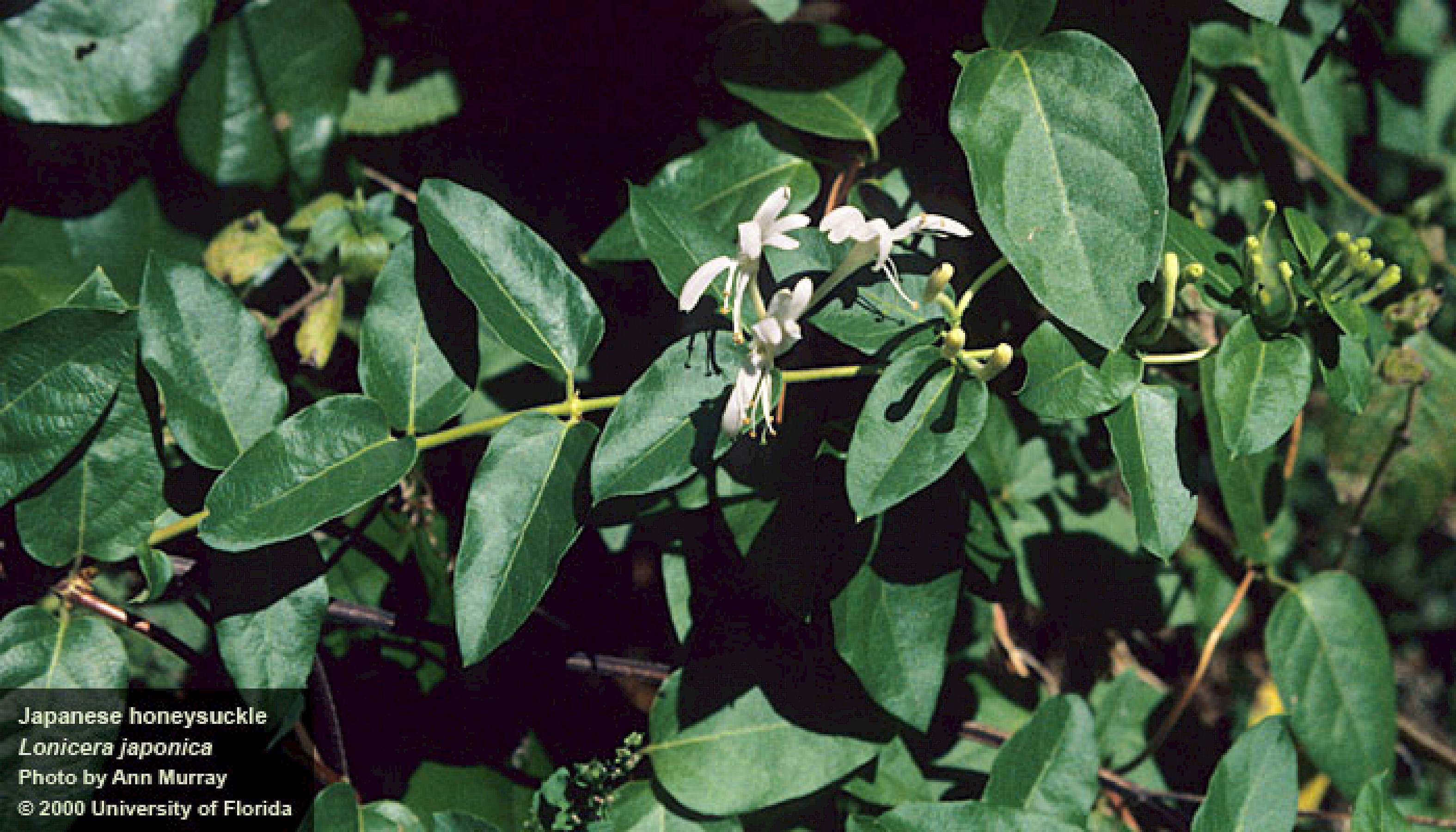Six Rivers “Dirty Dozen” Invasive Species
Japanese Honeysuckle (Lonicera japonica)
Define Invasive Species: must have all of the following –
- Is non-native to the area, in our case northwest Florida
- Introduced by humans, whether intentional or accidental
- Causing either an environmental or economic problem, possibly both
Define “Dirty Dozen” Species:
These are species that are well established within the CISMA and are considered, by members of the CISMA, to be one of the top 12 worst problems in our area.
Native Range:
Japanese honeysuckle is native to China, Japan, and Korea.
Introduction:
Japanese honeysuckle was first introduced to Florida in 1875 for agricultural and gardening purposes. It was introduced as a forage plant in the agriculture industry and was very popular as a landscape plant due to its beautiful showy flowers. Its invasive nature was quickly discovered and is now listed as a Category I invasive plant and a Florida noxious weed.
EDDMapS currently has 115,101 records of this plant across the country. Most are east of the Mississippi River but cover the entire east coast, including New England. There are records in the southwestern part of the U.S. In Florida, most of the records are in the northern part of the state, particularly in the panhandle. There are few records south of Orlando. Within the Florida panhandle there are 1,558 records and 1,209 within the Six Rivers CISMA. As with most species, this is probably underreported.
Description:
Japanese honeysuckle is a woody vine that produces beautiful white flowers. These flowers have multiple sepals, and the stamens which extend outward resembling “whiskers”. The leaves are about 1-3 inches, ovate is shape, and opposite on the stem. The small fruits are green and hard when immature, black and soft when older.
Issues and Impacts:
This is an aggressive growing vine that can quickly take over the landscape. It can cover small shrubs and trees killing them, block sunlight so germination of other plants is impossible, and outcompete native plants for needed sunlight decreasing the biodiversity within the area.
Management:
Removing by hand or shovel is effective on small patches. Mowing small patches has found to reduce seed spread but the parent plant may return with additional stems. Mechanical tillage can be effective but can enhance seed dispersal from the seed bank and is not always an option in some locations.
Chemical treatment with either glyphosate or triclopyr has been effective however, cut stump application is recommended. Foliar sprays that do not reach ALL leaves can induce resprouting.
There are no known biological controls at this time.
For more information on this Dirty Dozen species, contact your local extension office.
References
Japanese Honeysuckle. University of Florida IFAS Center for Aquatic and Invasive Plants
https://plants.ifas.ufl.edu/plant-directory/lonicera-japonica/.
Lonicera japonica. University of Florida IFAS Assessment. https://assessment.ifas.ufl.edu/assessments/lonicera-japonica/.
Early Detection and Distribution Mapping System (EDDMapS)
Six Rivers CISMA
https://www.floridainvasives.org/sixrivers/
- Our Environment: Part 10 – Improving Agriculture - June 20, 2025
- Marine Creatures of the Northern Gulf – Snails and Slugs - June 20, 2025
- Our Environment: Part 9 – Agriculture Challenges - June 6, 2025

